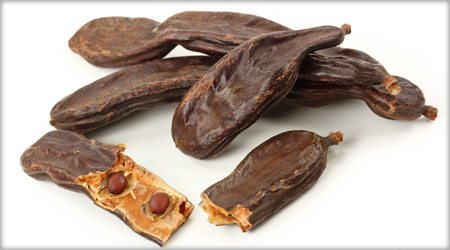Exploring Emulsifier In Food for Food Product Developers
Everything about the Function of an Emulsifier in Food and Its Relevance in Modern Food
Emulsifiers are crucial in modern-day food, promoting the mix of immiscible liquids like oil and water. Their capability to stabilize mixtures enhances the appearance and flavor of numerous food. From salad dressings to baked products, emulsifiers play a considerable duty in both industrial and home food preparation. Yet, the scientific research behind their feature and the future developments in their usage continue to be less discovered. Emulsifier In Food. What a lot more could be unearthed regarding these important culinary representatives?
Comprehending Emulsification: The Scientific Research Behind the Process
Emulsification might seem like a straightforward cooking technique, it entails complex scientific concepts that are essential for producing secure mixes of immiscible liquids, such as oil and water. At the heart of this process exists the principle of surface stress, which prevents both liquids from mixing normally. Emulsifiers, compounds that lower surface area tension, play an important role in helping with the mix of these fluids. They possess both hydrophilic (water-attracting) and hydrophobic (water-repelling) properties, permitting them to secure themselves at the user interface in between oil and water.
When an emulsifier is introduced and the combination is agitated, it develops a safety obstacle around distributed droplets of one liquid within the various other, stabilizing the mixture. This activity not just improves appearance and mouthfeel in food items but likewise adds to their aesthetic appeal. Emulsifier In Food. Recognizing the scientific research behind emulsification is essential in contemporary cuisine, allowing chefs to produce a range of sauces, dressings, and emulsified meals
Typical Sorts Of Emulsifiers Made Use Of in Food
Emulsifiers are vital active ingredients in the food industry, playing a crucial duty in stabilizing blends of oil and water. Various kinds of emulsifiers are generally utilized, each with distinct buildings suited for different applications. Lecithin, originated from soybeans or egg yolks, is among one of the most popular all-natural emulsifiers, typically found in delicious chocolates and dressings. Mono- and diglycerides, which are originated from glycerol and fatty acids, are widely utilized in baked items and margarine to enhance appearance and prolong service life. An additional common emulsifier is polysorbate 80, favored for its ability to boost the consistency of gelato and sauces. Furthermore, xanthan gum and guar gum tissue function as thickening agents that additionally add to emulsification in gluten-free products. These emulsifiers are indispensable to developing a secure, palatable item in contemporary food formulations, guaranteeing a positive sensory experience for customers.
The Duty of Emulsifiers in Different Food Products
A variety of foodstuff rely upon emulsifiers to accomplish desired appearances and stability. These compounds promote the blending of immiscible fluids, such as oil and water, which is vital in several refined foods. As an example, in salad dressings, emulsifiers help maintain a regular blend, protecting against splitting up and improving shelf life. In baked items, they add to a consistent crumb framework and wetness retention, improving overall quality.
Emulsifiers additionally play a substantial duty in milk products, such as gelato and yogurt, where they stabilize fat globules, making certain a smooth mouthfeel. Additionally, in dressings and sauces, they improve thickness and enhance spreadability. This capability is crucial in the production of chocolates, margarine, and mayonnaise, where a natural product is needed. Overall, making use of emulsifiers in various foodstuff is indispensable to contemporary food manufacturing, enhancing stability and uniformity throughout a large range of items.
Exactly How Emulsifiers Enhance Structure and Taste

When read integrated into food, have a peek at these guys emulsifiers greatly improve both structure and flavor, developing a more pleasurable consuming experience. These materials facilitate the blending of active ingredients that typically do not mix well, such as oil and water, resulting in a smoother, creamier consistency. This not only enhances mouthfeel yet also permits flavors to distribute equally throughout the product, enhancing the overall taste.
:max_bytes(150000):strip_icc()/__opt__aboutcom__coeus__resources__content_migration__serious_eats__seriouseats.com__2019__10__emulsions-9da481cbb81a402f9bc579ff4b0d85ff.jpg)
Emulsifiers in Home Cooking: Tips and Techniques
Exactly how can home chefs effectively utilize emulsifiers to improve their dishes? Emulsifiers play a crucial role in achieving desirable textures and flavors in homemade dishes. Using egg yolks in mayo or hollandaise sauce enables for a stable solution, combining oil and water effectively. Home chefs can also explore mustard, which works as an emulsifier in vinaigrettes, making sure a smooth consistency.
In cooking, incorporating lecithin, discovered in egg yolks or soy, can boost dough stability and moisture retention. Additionally, making use of industrial emulsifiers like xanthan gum or guar gum tissue can help thicken sauces and dressings while keeping a luscious mouthfeel.
When developing ice lotions or whipped garnishes, emulsifiers can stop ice crystal formation, causing a smoother appearance. By understanding these strategies, home cooks can greatly elevate their cooking developments, providing consistent and enjoyable meals that display the power of emulsification.
The Future of Emulsifiers in Culinary Innovation
As the cooking world remains to progress, the role of emulsifiers is poised to end up being diverse and progressively innovative. Advances in food science are resulting in the development of new emulsifying agents stemmed from natural resources, which deal with health-conscious consumers and enhance the sensory top qualities of meals. Innovations such as plant-based emulsifiers are acquiring grip, permitting chefs to create vegan and allergen-free choices without jeopardizing appearance or flavor.
Additionally, using emulsifiers in molecular gastronomy is increasing, enabling chefs to trying out distinct appearances and presentations that mesmerize restaurants. As sustainability ends up being a top priority, the future might see a shift in the direction of eco-friendly emulsifiers that minimize ecological influence.
Inevitably, emulsifiers will proceed to play an essential role in cooking innovation, connecting the space between tradition and modernity, and enabling cooks to press the boundaries of imagination in their cooking areas.
Often Asked Inquiries

Are Emulsifiers Safe for Individuals With Allergic reactions?
Emulsifiers can be safe for people with allergic reactions, depending upon their specific level of sensitivities. Particular emulsifiers, derived from allergenic resources like soy or eggs, might cause responses, requiring mindful component scrutiny and assessment with medical care professionals.
Just How Do Emulsifiers Influence Food Life Span?
Emulsifiers improve food shelf life by maintaining combinations, avoiding separation, and minimizing microbial development. This stability aids maintain texture and flavor with time, allowing items to remain risk-free and enticing for consumption much longer than without emulsifiers.
Can Emulsifiers Be Derived From Natural Sources?
Yes, emulsifiers can be originated from all-natural resources such as plants, eggs, and milk products (Emulsifier In Food). These all-natural emulsifiers assist stabilize mixes, enhancing appearance and uniformity in various food applications while being preferred for health-conscious customers
What Are the Environmental Effects of Emulsifier Manufacturing?
The ecological impacts of emulsifier production include resource depletion, habitat destruction, and air pollution from artificial procedures. More about the author All-natural emulsifier sourcing can mitigate some impacts, however generally, industrial techniques still pose considerable ecological obstacles to ecological communities worldwide.

Exist Vegan Emulsifiers Available in the Market?
Yes, there are numerous vegan emulsifiers available out there, such as lecithin originated from soy or sunflower, guar gum, and xanthan gum. These choices provide to plant-based diet regimens without compromising emulsifying residential or commercial properties.
Emulsifiers are vital ingredients in the food industry, playing a crucial function in supporting mixes of oil and water. A range of food items count on emulsifiers to attain desired appearances and security. When integrated into food products, emulsifiers substantially boost both structure and taste, developing a more satisfying consuming experience. Additionally, emulsifiers can support air pockets in whipped products like mousses and creams, leading to a light and airy texture. Emulsifiers enhance food rack life by maintaining mixtures, stopping splitting up, and lowering microbial growth.